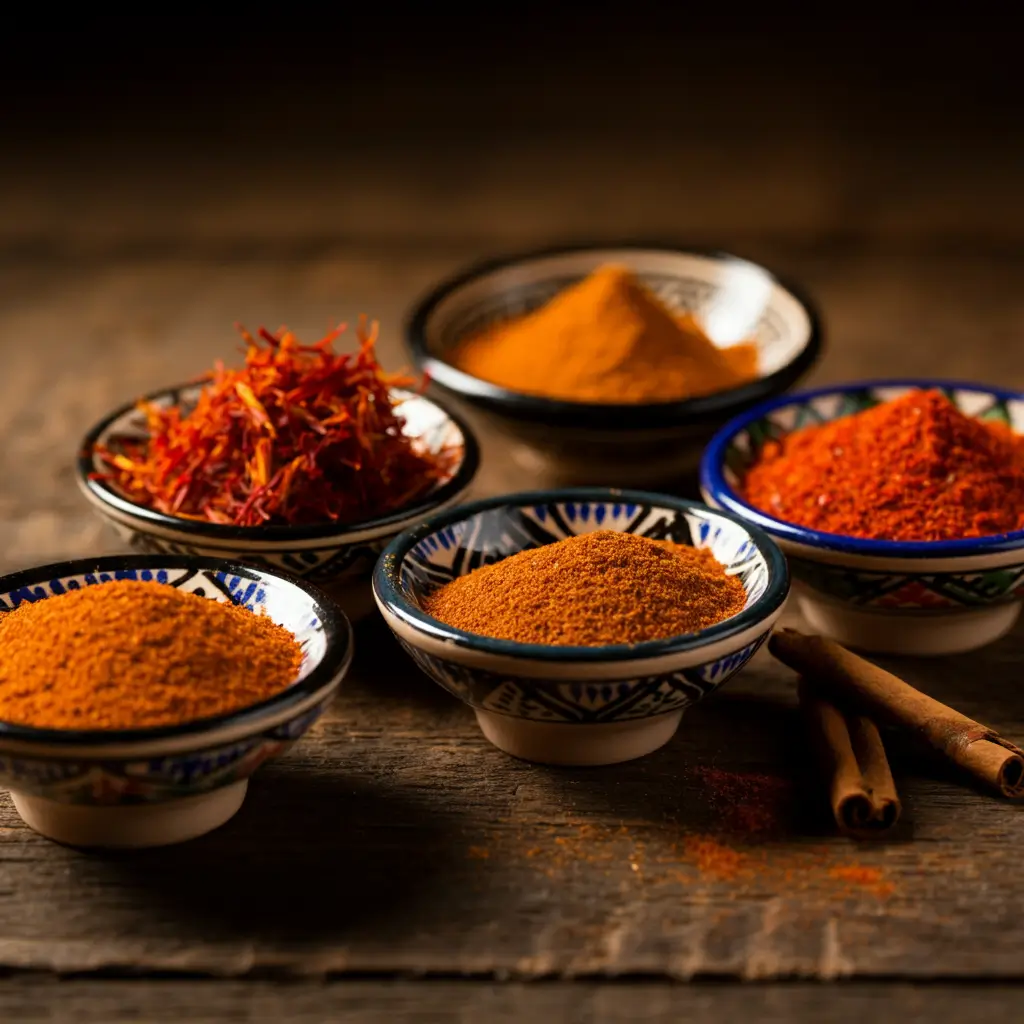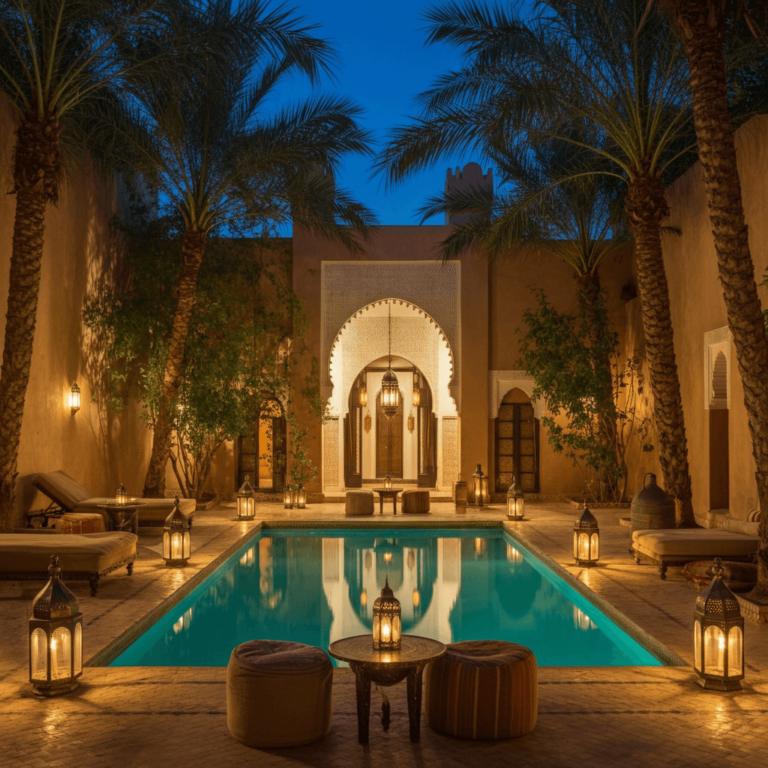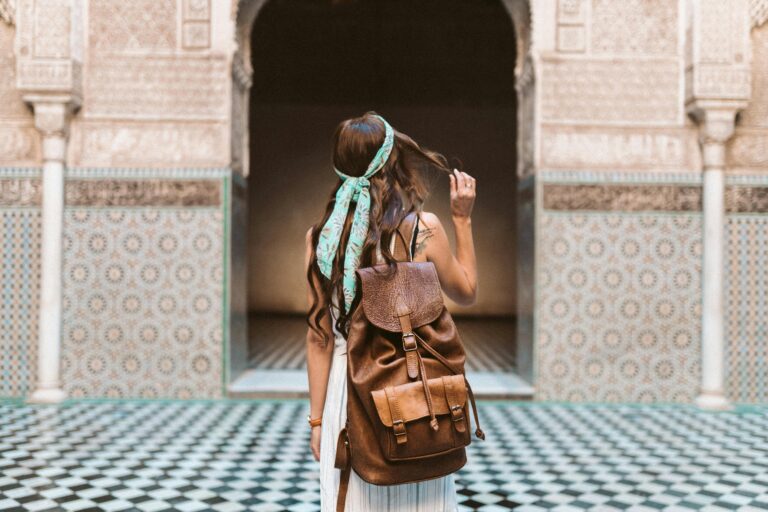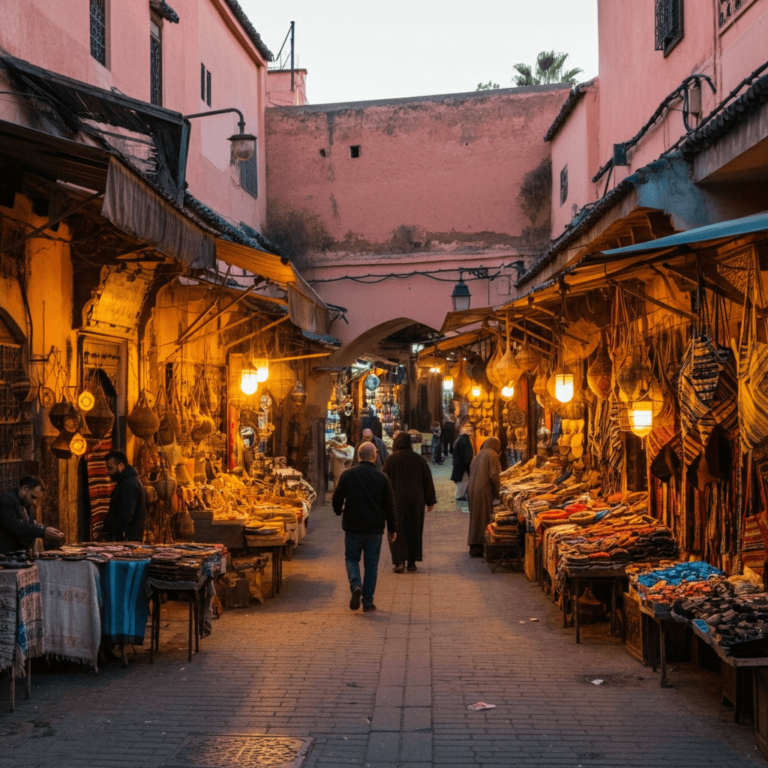What to Buy in Marrakech: 10 Must-Have Souvenirs
Strolling along the vibrant streets of Marrakech is like entering a colorful tapestry. Each stall is full of handmade crafts, artistic wonders and provides chat – as well as an insight of what to buy in Marrakech. These items embody the spirit of this lively city.
When thinking about what to buy in Marrakech, let your curiosity lead you. Look for souvenirs that spark a special connection. From aromatic spices to beautiful argan oil, each item tells a story of Moroccan heritage.
Wander the bustling souks and modern boutiques. Discover keepsakes that carry cherished memories back home.
Understanding What to Buy in Marrakech
Wandering through the bazaars of Marrakech is an adventure in itself. There are vibrant textiles, aromatic spices and one-of-a-kind handmade items. Bartering is half the fun, so picking up a few phrases and wandering off the main paths can yield great finds.
Marrakech is a treasure trove of North African craftsmanship. Knowing prices beforehand can make you feel more confident. You’ll see everything from beautiful lanterns to leather goods, showcasing the area’s rich culture. Asking about an item’s history often uncovers interesting stories.
| Item | Why It’s Special | Negotiating Tip |
|---|---|---|
| Leather Bag | Handcrafted in local tanneries | Start low and raise your offer slowly |
| Colorful Spices | Authentic flavors of Moroccan cuisine | Bundle purchases for a better deal |
Moroccan Lanterns and Their Captivating Designs
These ornate pieces create a warm glow that turns any home into a peaceful retreat. Many collectors find them irresistible when looking for marrakech souvenirs. Each lantern tells a story about local craftsmanship.
Shapes range from classic cylinders to curved domes, with detailed motifs cut into brass or iron. A single gleaming light inside can enhance the lantern’s charm. It invites guests to bask in its subtle radiance.
Traditional Patterns and Materials
Copper plating and sturdy ironwork blend with opened fretwork designs. This allows beams of subtle light to shine through. Some artisans incorporate colored glass elements for a hint of sparkle.
The best lanterns often showcase careful hammering and engraving. This ensures each piece has personality and a distinct Moroccan flair.
Where to Spot Unique Lantern Shops
Souk Haddadine draws many travelers searching for distinctive lighting accents. Local blacksmiths craft lanterns by hand, with prices starting around 100 Dirham. Shoppers can watch skilled metalworkers transform raw materials into stunning art.
Learning how each lantern’s elegance stems from hours of focused labor. Venturing through market lanes reveals hidden corners where new designs await discovery. This offers one more reason to treasure these special marrakech souvenirs.
Handwoven Rugs and Berber Carpets: what to buy in marrakech
Rug-making is an ancient art in Morocco, passed down to Amazigh (Berber) women. They weave stories into every thread. Prices vary based on size, craftsmanship, and materials. These rugs are a top pick for their rich heritage and unique charm.

Designs That Reflect Marrakech’s Culture
Many rugs show off bright colors and geometric patterns. These designs come from long-standing traditions. You might find wool, camel hair, or cotton weaves, each with its own feel.
Tips for Negotiating Prices: what to buy in marrakech
Haggling is fun when buying rugs in Marrakech. Sellers expect a bit of negotiation, so don’t be shy. You can also get your rug shipped worldwide. For more tips, check out this guide on bargaining and finding an authentic rug.
Luxurious Argan Oil
Argan oil comes from Morocco’s southwest. It’s thick, golden, and has a nutty smell. Many places near Marrakech markets sell pure argan oil for beauty and taste.
This oil is from argan tree kernels, valued for ages. Locals use it for hair and skin, or on salads.

Finding good argan oil takes care. The best is clearer and lasts longer. Look for a mild smell and “100% pure” labels.
Prices vary, but argan oil is worth it. A small bottle makes a great gift or treat, showing Marrakech’s rich heritage.
Vibrant Spices and Their Aromatic Appeal
Marrakech is full of color and smell, thanks to the spice stalls. Saffron, turmeric, and cumin fill the air. They remind us of the local cooking magic. Travelers often see saffron priced over 50 Dirham per gram, showing its high value.

The smells of these spices attract people from all over. Adding them to tagines or grilled veggies makes food more exciting. Paprika and ginger are also popular, offering a taste adventure.
Essential Spice Mixes
Ras El Hanout is a mix of many spices. It can have dozens of ingredients. Just a little of it can make a simple dish special.
How to Store and Use Spices
Use containers with tight lids to keep spices fresh. Cumin or turmeric adds warmth to rice, while saffron makes broths fancy. These spices make every meal better.
Leather Goods from the Tannery
Sleek handbags, lasting wallets, and fine jackets are found in Marrakech’s leather shops. Rich colors and detailed stitching make each item a classic accessory. Many locals say these are among the best purchases in marrakech.
Souk Cherratin and Souk Btana offer a glimpse into this craft. Walking through these markets, you see how leather is tanned and dyed. The smell is strong but shows the tradition, as artisans work with camel, goat, and cow leathers.

Seeing this heritage up close makes you appreciate the designs. Buying a well-made bag or purse gives you a unique item that lasts. It shows Marrakech’s dedication to quality leatherwork.
Traditional Moroccan Tea Sets
Teatime in Morocco is a cherished ritual. It’s marked by ornate pots and colorful glassware. Collectors and visitors often look for metal sets that can handle direct heat.
This style shows both heritage and function. It lets mint leaves and green tea simmer at the perfect temperature. For those interested in what to buy in marrakech, marrakech shopping tips, a teapot is more than a souvenir. It’s a gateway to local customs and personal style.
Materials and Craftsmanship
Many popular teapots are made from stainless steel or brass. These materials keep heat well and last long. A 16oz pot is great for small gatherings, while a 32oz is better for hosting friends.
Using a heat diffuser on your stovetop or burner helps keep your pot shiny. Match your pot with engraved or brightly colored glasses that capture Morocco’s spirit. Consider browsing the souks, and this guide offers insights on picking authentic, non-counterfeit pieces.

Brewing the Perfect Moroccan Tea
A balanced brew often includes green tea leaves, fresh mint, and a bit of sugar. Pouring from a higher angle creates a classic foam atop each cup. This foam is part of the appeal, blending tea and bubbles into every sip.
Pick a sturdy metal pot designed for boiling. This way, you can recreate this cultural tradition at home.
Babouches: Moroccan Slippers
Bright and stylish babouches are loved for their unique shapes and soft leather. Many travelers searching for what to buy in marrakech end up picking these iconic slippers. Each pair can feature intricate embroidery or fun patterns, making them a delightful souvenir. you can read this article talking about top things to do in marrakech

Quality often relies on the thickness of the sole and the materials used. Some designs are suitable for indoor wear, while sturdier options work outdoors. These slippers come in vivid colors that reflect the lively ambiance of local souks.
Finding the Right Fit
Trying them on before purchase helps you gauge comfort. Slip both feet into the babouches and take a few steps. A snug fit prevents slipping. Thicker soles add support if you plan to use them for long strolls.
Styling Your Traditional Footwear
Pair your babouches with casual jeans or flowing dresses. Muted shades look refined, while colorful motifs make a bold statement. Many enthusiasts of Moroccan culture enjoy showing off these slippers long after they return from exploring what to buy in marrakech.
Ceramic Treasures and Pottery
Hand-molded ceramics add color and warmth to kitchens. Souk Fekharine is full of tagines, plates, and vases in many shapes. Skilled artisans create unique pieces that reflect local patterns.
Many travelers buy these souvenirs to brighten their homes in the UK.
Tagines are both beautiful and practical, keeping stews warm. Plates and bowls often have geometric designs or earthy tones. Each piece is delicate, so it’s important to wrap them carefully.
When shopping for souvenirs, ask the staff about protective packaging for your journey home.

| Common Ceramic Item | Features | Possible Uses |
|---|---|---|
| Tagine | Conical lid for slow-cooking | Traditional stews |
| Plate | Vibrant motifs | Everyday dining or wall display |
| Vase | Hand-painted exteriors | Fresh flowers or decorative arrangement |
| Bowl | Bold patterns | Serving fruit or small dishes |
Conclusion: what to buy in marrakech
Traveling home with local crafts in mind is helpful. Small bills can make a big difference when talking to artisans in the medina. Being polite helps build trust as you look at designs or ask about colors that show the city’s spirit.
You can find pure argan oil at places like Cooperative Marjana. It adds a Moroccan touch to your home.
It’s important to be careful when checking if things are real. Feel the quality of leather or look closely at the details on lanterns and ceramics. These tips help you find good deals in Marrakech’s souks.
Some people like to visit places like Ensemble Artisanal to learn the stories behind the crafts. These experiences make your time in Marrakech special and memorable.
FAQ
How do I begin my shopping guide for Marrakech: what to buy in marrakech?
Start your journey in the bustling medina. Here, you’ll see centuries-old trading traditions. Learn about prices, practice bargaining phrases, and find hidden gems beyond the main squares.
Which items are considered must-buy items in Marrakech?
Moroccan lanterns, handwoven rugs, and aromatic spices are top picks. Quality argan oil, ceramic tagines, and babouches are also favorites. These items showcase Marrakech’s rich culture and art.
Where can I purchase the best Moroccan lanterns in Marrakech?
Souk Haddadine is famous for its brass and iron lanterns. You can also find unique styles in smaller workshops around the medina. It’s a great find for those who love home décor.
Are there specific marrakech shopping tips for buying Berber rugs?
Yes. Check the rug’s material and pattern details. Don’t be shy to haggle. Many shops ship worldwide, so you won’t have to carry a big rug.
How can I ensure I’m buying genuine argan oil?
Genuine oil is slightly opaque and has a nutty smell. Reputable shops let you taste it. High-quality oil is worth the extra cost for cooking and skincare.
Do I need special considerations for buying spices at Marrakech markets?
Yes. Spices like turmeric and Ras El Hanout are common. Keep them fresh in airtight containers. Also, check customs rules for food items.
What should I look for when buying leather goods in Marrakech?
Visit tanneries to see the dyeing process. Look at texture, stitching, and quality. Leather goods, from bags to jackets, are a must-see in Marrakech.
Are Moroccan tea sets practical or purely decorative?
Some are decorative, others for stovetop use. Choose stainless steel or copper teapots for high heat. Elaborate tea glasses add to the authentic experience.
How do I pick the right babouches when browsing marrakech souvenirs?
Babouches vary in size, material, and design. Try them on for a good fit. They’re a fun way to add Moroccan style to your wardrobe.
What’s the best way to buy ceramics without worrying about damage during travel?
Look for shops that wrap items well. Consider buying bubble wrap. Fragile items like tagines and plates can be safely packed. These ceramics are perfect for home décor.




